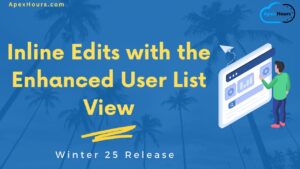Salesforce Flow allows teams to build complex business automation with clicks not code. This means that admins can maintain more of the business logic and reduce the bottleneck on developers, improving project velocity and delivering value to the business faster. But Salesforce Flows usually present a big challenge on release day. In this article, we’ll explore what makes Flows so tricky to deploy and how Gearset’s Flow Navigator streamlines the process with a visual comparison for quick, declarative deployments. Join us to learn about How to Tackle Flow Deployments.
Why are Flows difficult to deploy?
You can deploy Flows using change sets. But there are a few “gotchas” to watch out for:
- Dependencies. Any items that the Flow references must be included in the deployment, and these won’t be displayed in the Component Dependencies page.
- Versioning. When multiple people are working on different versions of the same flow, it’s difficult to know which version you’re deploying.
- Flow activation. Flows are deployed to production orgs as inactive and need to be activated manually as a post-deployment step.
- Visibility. You can’t see the differences between Flows in the source and target orgs of your deployment.
- Rollback. There’s no way to roll back a deployment with change sets.
- Destructive changes. There’s also no way to deploy a deletion with change sets, so if anything goes wrong you’ll need to fix it manually in production.
The main alternative to change sets is any deployment tool that uses the Metadata API to retrieve and deploy Flows. But these tools usually represent Flows as XML, and this is a challenge because:
- The XML puts elements in a different order to Flow Builder.
- The XML is noisy, with lots of location changes, making it hard to find true changes.
- There can be hundreds, thousands, or even tens of thousands of lines of XML to deal with.
- By default, the Metadata API will return the latest version of the Flow even if it’s a draft version.
- The XML is especially intimidating to read for no-code developers.
All of this makes it difficult to know exactly what changes are being deployed. So it’s easy to accidentally include work in progress, or overwrite someone else’s changes, causing avoidable errors in production.
And as with change sets, the Flow still needs to be activated as a post-deployment step. It’s common to have end users complaining about fixes that have been deployed, but which no one remembered to activate.
A new solution for Salesforce Flow deployments
Ultimately, while Flow Builder offers a great experience for no-code admins to build business automation, those same teammates are often left with a really poor experience for deployments, and that impacts everyone in the team and wider business.
That’s why it’s exciting Gearset has just rolled out industry-first functionality that solves the pain points for Flow deployments.
Visualize differences in Flows between environments.
Manual deployments in Gearset involve comparing the source and target environments (Salesforce orgs or Git branches), and selecting the changes to deploy.
Several metadata types have specific rendering, and Gearset now does this for Flows. The “Flow Navigator” UI shows you an interactive diagram and sidebar. You can explore the Flow— new or changed elements are highlighted for easy identification. And the sidebar breaks down the changes into individual elements and resources, making it simple to spot any unwanted changes.

Get a detailed breakdown of the changes made
You can drill down into any Flow element to review the changes in a simple table, so you can be confident you’re deploying exactly what you expect to.
Switch versions with a click
You can easily switch the comparison to an earlier version of the Flow, which is super useful if the latest version contains work in progress that shouldn’t be deployed.
Automatic Flow activation
Once you’re happy with the changes you’ve selected for deployment, Gearset will review the package and identify any potential issues before the deployment runs.
On the pre-deployment summary page, you can also opt to have Gearset activate the Flows automatically, cutting out those manual post-deployment steps!
Flow deployments that look like Flow Builder
Flow Navigator means that the no-code developers who most often use Flows no longer have to choose between change sets or other deployment tools that just retrieve XML. Gearset offers a 30-day trial, so you can try out the platform — including Flow Navigator — for free.




